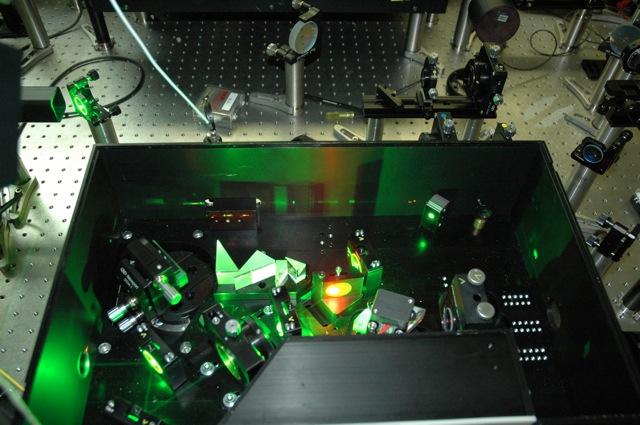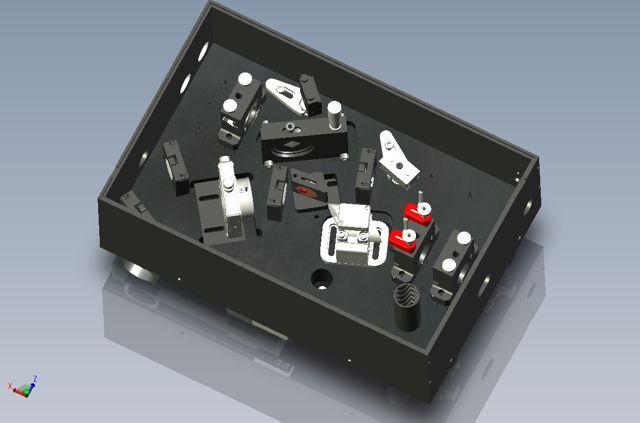Laser development is motivated by the need for highest ionization efficiencies for short-lived isotopes on-line. Highest ionization efficiencies must be maintained in 24/7 beam delivery over 1-2 weeks to experiments.
In addition the laser sources must allow for minimal maintenance and flexibility to switch rapidly between different elements, at an affordable price. To that end, continuous improvements have been implemented in the TRIUMF versions of the original Mainz (2001) design lasers. A grating tuned TiSa laser was succesfully applied for on-line in-source laser spectroscopy in Dec. 2010 for in-source spectroscopy of Astatine, followd by a beam time on At and Ac in Sept. 2011, and Po in Sept.2012. Current developments are towards extended power and tuning range for the spectroscopy grating laser, automated frequency doubled scans, as well as frequency mixing for automated scanning of frequency tripled TiSa lasers.
| prism TiSa laser for RILIS & spectroscopy AG (2021/22) | primary laser frequency standard Preocanin (2021) | automated saturation measurements Leifeld (2021) |
ALIS MK5.1 2017 -> under development (student needed) |
RILIS v2003-2008/v2011 GISELE v2011 automated scans (yield) 2014 -> RILIS stable operation -> ALIS installation |
RILIS v2009/v2011/v2012 BTI & GISELE v2012 RILIS v2013 (autoscan) v2016 (doubled scans) -> 2D spectroscopy 2017/18 |
Frequency tripling, mixing /quadrupling auto-tracking frequency doubling of grating TiSa laser (v2011 test & on-line operation Sept.2011) upgrades to v2013 in progress high power grating laser (2017) frequency mixing (ongoing) | Chromium Forsterite laser (CroFo) set-up: waiting for a motivated student to install a1064nm pump laser & characterized the CroFo -> still active 2016 (open project) | narrow bandwidth - pulsed TiSa laser for dedicated resonance ionization spectroscopy applications with MHz linewidth, high pulse power and 10kHz repetition rate for hyperfines structure studies of heavy isotopes -> original development for ALPHA Canada (243nm), now for in-source spectroscopy of isotopes off-line -> open project |

 TiSa laser upgrades
TiSa laser upgrades TiSa laser with long term frequency stability
TiSa laser with long term frequency stability